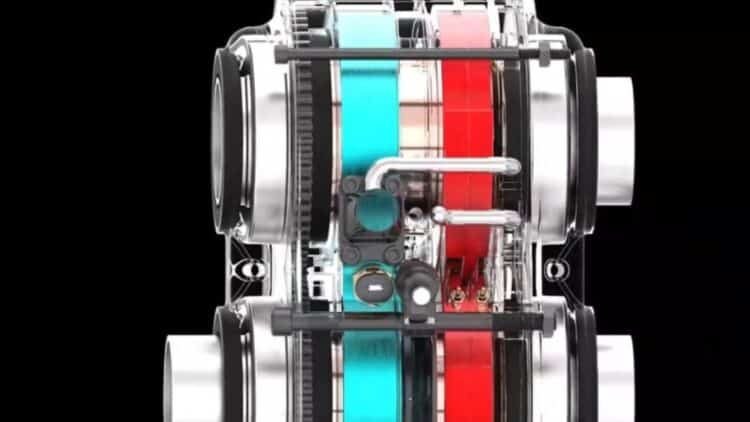With Astron Aerospace working towards re-envisioning the Omega 1 engine, it is clear that the idea is to work on internal combustion itself. On offer is an engine so futuristic, without cylinders or pistons, completely overpowering logic. The design is rather unconventional, but aside from being something out of the box, the engine allows for low emissions and better efficiency. Innovation is clearly at the forefront with this engine, and it is evident that Astron Aerospace is pulling out all of the stops.
Wankel was at the forefront of this futuristic engine
While attempting to understand how this engine is at the forefront of futuristic engines, it becomes essential to recap the history of rotary engines. Initially, it was the German engineer Felix Wankel who made the rotary engine a reality for Mazda. With this rotary engine, pistons were replaced with a triangular rotor within an oval chamber. While Wankel’s initial engine was powerful, it experienced severe issues, especially with the apex seals that often wore out.
While Astron Aerospace’s Omega 1 uses Wankel’s overall idea, it gets rid of the triangle completely. Where Omega 1 differs is in terms of its spinning rotors that are donut-shaped. The initial four-stroke cycle is split into two halves. One half takes care of compression, and the other half takes into consideration combustion. Having no piston in mind, the Omega 1 is created to be efficient and long-lasting.
The inner workings of Omega 1
The sophisticated engineering behind Omega 1 makes it a certainty that it will work well. Deviating from the more tried and tested camshafts and valves, the engine makes use of high-pressure air that gets fed into the compression chamber. The exhaust cycles tend to be controlled by spinning rotors and synchronized gears, where only a few bearings make contact. All of the rest of the engine is almost frictionless.
High RPMs allow for the complete elimination of compressed air and reduce the need for complex sealing. Another attractive aspect of Omega 1 is that it makes use of the “skip-fire” method, which ignites fuel for cruising only. Astron has outlined that Omega 1 is so futuristic, it could also be considered for EVs. With NASA revealing the perfect fuel, we are left guessing what fuel Omega 1 utilizes.
Modular and driven for excellence
While all the reasons for choosing Omega 1 as the preferred engine of choice are valid, its modularity is also another factor that makes this engine something else. When two units get stacked over, the horsepower increases to 300 and the torque to 340 lb-ft. This impressive horsepower and torque are allowed by a nifty little device weighing approximately 150 kilograms. To expand the offering of Omega 1, more units can be added; however, with more units, the engine still seems lightweight and relatively compact in size. The reason why Omega 1 can be used for generators as well as for aerospace missions is that it is so compact.
Another amazing feature of Omega 1 is that it runs on hydrogen. Hydrogen is the fuel that puts it at the forefront of sustainable solutions. Offering low emissions, it’s undeniable why Omega 1 is highly desired in terms of efficiency and environmental friendliness. Just when we assumed we were saying goodbye to rotary engines, this engine changed the game.
Reawakening the idea of internal combustion in a rebooted form, the Omega 1 from Astron Aerospace is making waves that too, without pistons and cylinders. At present, it is yet to be seen how the Omega 1 performs when real-world testing is underway, but as it stands, Astron has lived up to the promise of showing how efficient internal combustion can really be.
Disclaimer: Our coverage of events affecting companies is purely informative and descriptive. Under no circumstances does it seek to promote an opinion or create a trend, nor can it be taken as investment advice or a recommendation of any kind.


